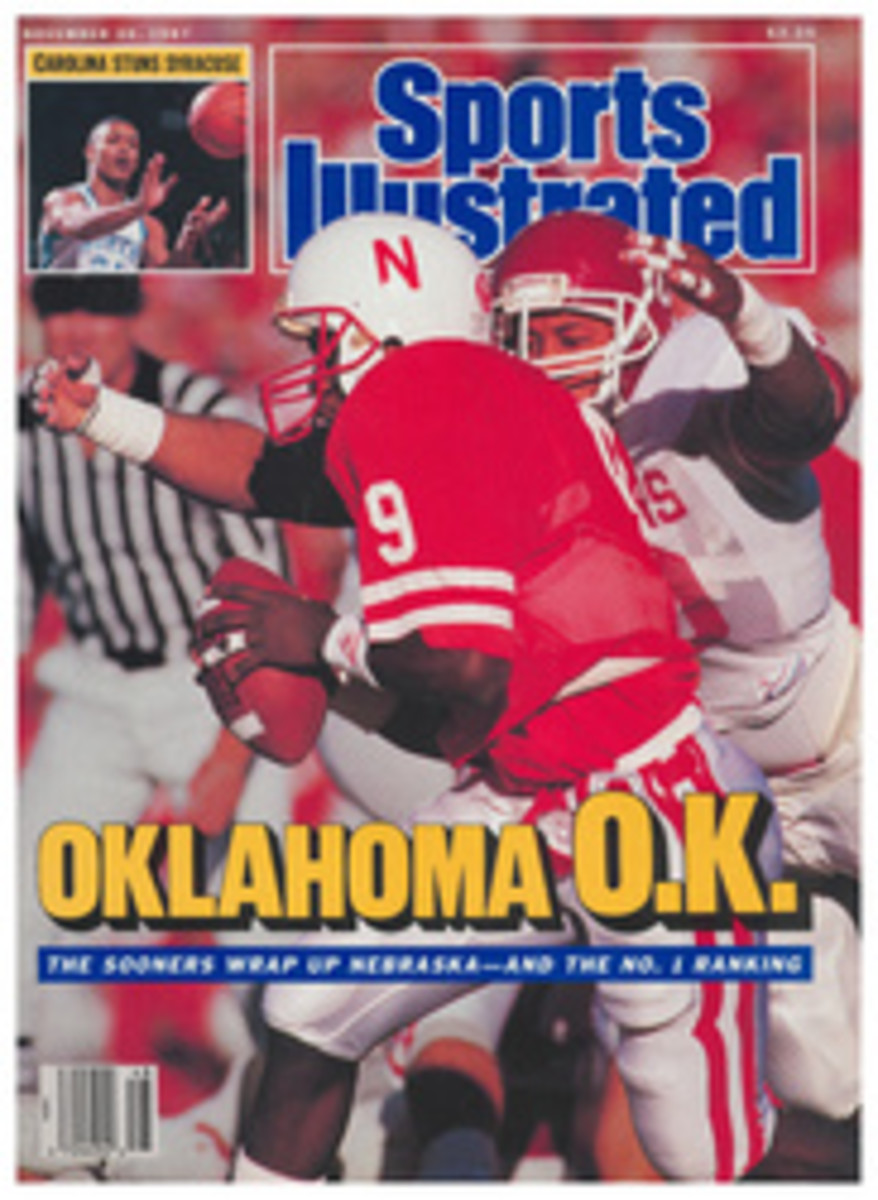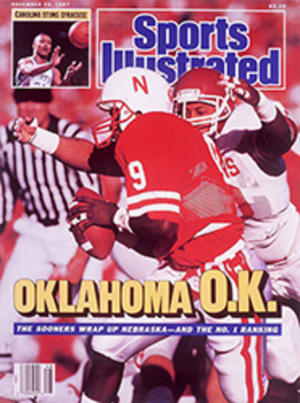
THIS CLEAT COULD BE PIVOTAL
Sometimes misfortune, not necessity, is the mother of invention. Such is the case with the new Tanel 360° football shoe, the creation of a former defensive end at Carthage College in Kenosha, Wash., who blew out his knee making a tackle late in his senior season in 1977.
"As I was wrestling a running back to the ground, my foot got stuck in the grass, and I twisted and dislocated my right knee," says Mike Tanel, 32, the founder and president of the Tanel Corp. "What really bothered me was that as far as football fundamentals go, I did everything properly. I was on the balls of my feet, my head was where it should have been, but my foot didn't turn."
Tanel, who recovered sufficiently to earn a tryout with the Green Bay Packers, began thinking about a shoe that would let a players foot pivot and still provide good traction. "I realized that the only way it could pivot was if it had a single pivot point," says Tanel. "But one cleat, of course, wouldn't give the traction necessary to play football [conventional football shoes have from five to 12 or more cleats in the forefoot area]. So we started thinking about one large hollowed out cleat."
Eight years and a dozen prototypes later, the forefoot area of the sole of the Tanel 360° resembles a horseshoe with a single cleat in the center. A shoe for artificial turf has also been created, with raised concentric circles fore and aft in the rubber sole.
In addition to reducing lower-leg injuries, Tanel claims other benefits for the 360°s. According to a study conducted for Tanel Corp. by the University of Wisconsin-Milwaukee College of Engineering & Applied Science, the 360°s actually provide equal or better traction than conventional shoes on both wet and dry fields. Tanel also says, "Because a player can pivot so easily on the circular tread, it's easier to reverse direction."
The Tanel 360° is starting to generate believers. In its first season of general availability more than 8,000 of the shoes have been sold. Last year Lawrence University, a Division III team in Appleton, Wis., won the Midwest Conference with about 80% of the team wearing Tanel shoes. In 1985 Lawrence had three knee injuries requiring major surgery. But according to team trainer Jay Davide, knee treatment in 1986 was limited to one minor arthroscopic procedure, and that was on a reinjury. After seven games this season, Lawrence players have suffered three knee injuries, but Davide notes that in two of those cases the players were hurt while flying through the air and what was on their feet had nothing to do with their injuries.
Pro trainers are also starting to use the Tanel shoe. Buffalo trainer Ed Abramoski is one convert. After Bills guard Tim Vogler sprained his midfoot in a preseason scrimmage, Abramoski ordered Tanel 360°s for his offensive line. "I think Tanel's design is good," says Abramoski. "I think it's going to have a place in football." The shoe could get a possible boost from the results of an independent multi-year study of Tanel-and non-Tanel-equipped high school teams that has been undertaken by a sports medicine group in the southeast.
For now the shoes, which cost $57 to $70 depending on style (high or low top) and purpose (grass or artificial turf), can be ordered only from the company, by calling 1-800-541-4293 or by writing Tanel Corp., 1818 North Water Street, Milwaukee, Wis. 53201.
PHOTO
COURTESY OF TANEL CORP.
The Tanel has a unique sole.

